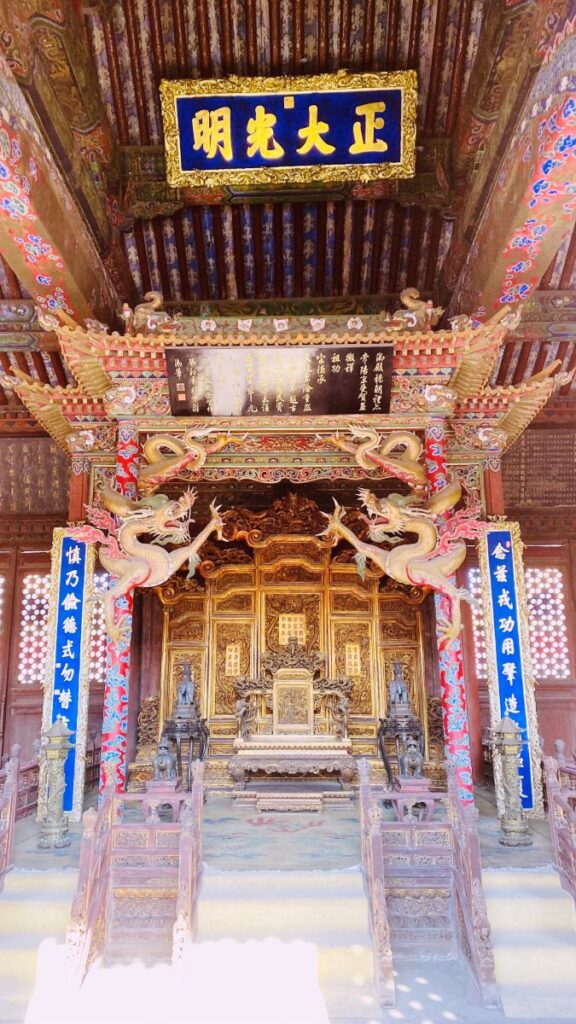Shenyang Imperial Palace, located in Shenhe District, Shenyang City, is one of the two well-preserved palace complexes in China. It served as the imperial palace before the Later Jin dynasty entered the pass and continued to function as the Shengjing (or Fengtian) Palace after the Qing dynasty relocated its capital to Beijing.
The Shenyang Imperial Palace Museum is renowned both domestically and internationally for its exquisite ancient architectural structures and its rich collection of precious artifacts. The palace houses a vast array of cultural relics from the old imperial court, which can be admired in various exhibition halls within the palace.
Wensu Pavilion’s architectural style significantly differs from other palaces, which are predominantly adorned with red and gold. Instead of the common dragon and phoenix motifs, it features themes such as ‘White Horse Presenting Books’ and ‘Ink and Scroll’, which harmonize with its function as a library, providing a sense of elegance and freshness. This is because it served as Emperor Qianlong’s reading place during his eastern tour.
Opening Hours: January 1st to April 9th – Tuesday to Friday from 9:00 to 16:30; Saturday and Sunday from 8:30 to 17:00; Mondays closed; April 10th to August 31st – Tuesday to Friday from 8:30 to 17:00; Mondays closed; Saturday and Sunday from 8:00 to 17:30; September 1st to October 10th – Monday to Friday from 8:30 to 17:00; Saturday and Sunday from 8:00 to 17:30; December 12th to December 31st – Mondays closed; Tuesday to Friday from 9:00 to 16:30; Saturday and Sunday from 8:30 to 16:30; October 11th to October 22nd – Mondays closed; Tuesday to Friday from 9:00 to 16:30; October 24th to December 11th – Tuesday to Friday from 9:00 to 16:30; Saturday and Sunday from 8:30 to 17:00; Labor Day, Dragon Boat Festival, Mid-Autumn Festival from 8:00 to 17:30; New Year’s Day, Spring Festival, Qingming Festival from 8:30 to 17:00; October 23rd from 9:00 to 16:00. Preferential Policies: Children aged 6 (inclusive) or under 1.3 meters (inclusive) in height enter for free. Minors: Parents accompanying minors (under 18) enter for free when the parent purchases a regular ticket (one parent can only bring one minor). Full-time undergraduate or lower students with a valid student ID (excluding adult education and postgraduate stages) enter at half price. Elderly aged 60 (inclusive) to 70 (exclusive) enter at half price with valid identification; those aged 70 (inclusive) and above enter for free with valid identification. Active-duty military personnel enter for free with valid identification. Retired military officers enter for free with valid identification. Veterans enter for free with preferential certificates. Firefighters enter for free with valid identification. Public security police enter for free with valid identification. Disabled individuals enter for free with a disability certificate issued by the China Disabled Persons’ Federation.For the blind (with visual disability level 2 or above), people with disabilities in both lower limbs, people with moderate intellectual disabilities (with intellectual disability level 3 or above) and people with mental disabilities, one accompanying person is allowed free admission.
Disabled military personnel and disabled police officers can enter for free with valid certificates. Three categories of family members of martyrs: family members of martyrs, family members of military personnel who died on duty, and family members of military personnel who died of illness can enter for free with preferential treatment certificates. Service Facilities: Luggage Storage: You need to show your ID card and register by phone for luggage storage. Scenic Area Explanation: The Shenyang Imperial Palace Explanation Station provides scenic area explanation services. Chinese explanation: 100 yuan for 1 – 5 people, 150 yuan for 6 – 10 people, 200 yuan for 11 – 20 people, 260 yuan for 21 – 30 people, and 300 yuan for over 30 people; Foreign language explanation: 200 yuan for 1 – 5 people, 300 yuan for 6 – 10 people, and 400 yuan for over 11 people. Location of the Explanation Service Station: Daqing Gate (from April 10th to October 10th) Toilets: There are multiple toilets in the scenic area, distributed along the roads in the scenic area and marked with eye-catching signs. Vending Machines: There are multiple vending machines in the Shenyang Imperial Palace Scenic Area.

